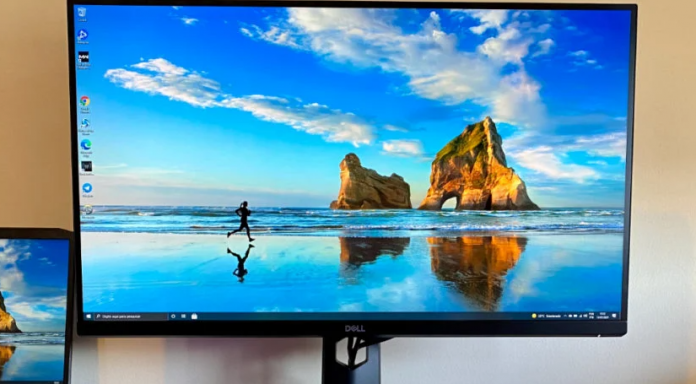While most companies take their gamer products to the characteristic look of this segment, which includes RGB lights and strong colors, along with straighter angles, others deliver the same functions in hybrid products. This is the case of the Dell S2721DGF, which works the images in 27 inches of an IPS panel, with QuadHD resolution (2K) and update at 165 Hz.
[Review] Acer Nitro VG240Y D: basic gamer monitor with built-in webcam
[Review] Samsung Odyssey G5 monitor: for gaming and work
To give more strength to the gamer side, this monitor is compatible with AMD’s FreeSync and Nvidia’s G-Sync, has HDR and the response time can reach 1ms from gray to gray. All in one face that may well get comfortable even in the office. I’ve spent the last few weeks with him at my desk and i’ll tell you my experience in the next few paragraphs.
Tecnoblog is an independent journalistic vehicle that has helped people make their next purchasing decision since 2005. Our analyses are not intended to be advertising, so they highlight the positive and negative points of each product. No company has paid, reviewed or had early access to this content.
Design and connections
If you hear the word gamer in some part of the name of anything, you should already imagine a product with flashing lights, contrasting colors on the housing, abusing blacks and red, or green, with virtually total absence of softer angles in design. This tends to be the setting for these items, but on this monitor Dell was cautious and clearly chose a look to stay as comfortable at the professional player’s desk as in the office room.
Looking ahead, only the base of the S2721DGF gives the feel of a gamer product and it is limited only to right angles. Even the color of the set, in gray, is more focused on a conventional monitor.
Speaking of which, the base has a generous number of adjustments for many sides. It can rotate and turn the monitor horizontally, allows height control on many levels, has a pin to even leave the screen standing, and allows the user to choose the best vertical position.
Besides allowing adjustment for many different use situations, these movements also help when it comes to seeing the connections and finding the correct input, which are many. The S2721DGF offers two HDMI 2.0, one DisplayPort 1.4, Audio input on P2 cable and four usb 3.0 ports energized, two near the base and two more close to the edge, sharing space with the headphone output. You can transit data between these USB by pluging a specific cable into your computer.
There is a message here: to have 165 Hz on the screen you need to use the DisplayPort cable, included in the box. HDMI ports are limited to 144 Hz and this detail also applies to Nvidia’s G-Sync.
Still on the back are the buttons and joystick for adjustments in the internal menu, next to the only part that can be characterized as gamer: a strip of blue light, running through the middle of this area. It can be turned off and the color is just the same, with no possibility of customization.
The cables can use a hole in the base that supports the monitor and thus descend to the computer in a more hidden way. In general, all adjustments are simple to perform, do not require user strength and the construction of the monitor, even being all plastic, passes very good feeling of robustness.
Image quality
The screen is 27 inches, in an IPS panel and with the possibility of showing content in update up to 165 Hz, along with HDR. Having an IPS panel means good and bad things at the same time, basic limitations of the same technology: the first is positive and stays at generous angles for viewing, allowing a friend to see what you do and it happens without chromatic aberration. The negative is in contrast, which tends not to be impressive. It’s not bad, but at the same time it doesn’t draw attention.
Dell has inserted local dimming around here, so this problem tends to be partially solved. HDR brightness can reach close to 500 nits, or 400 nits for content without dynamic range enabled.
































